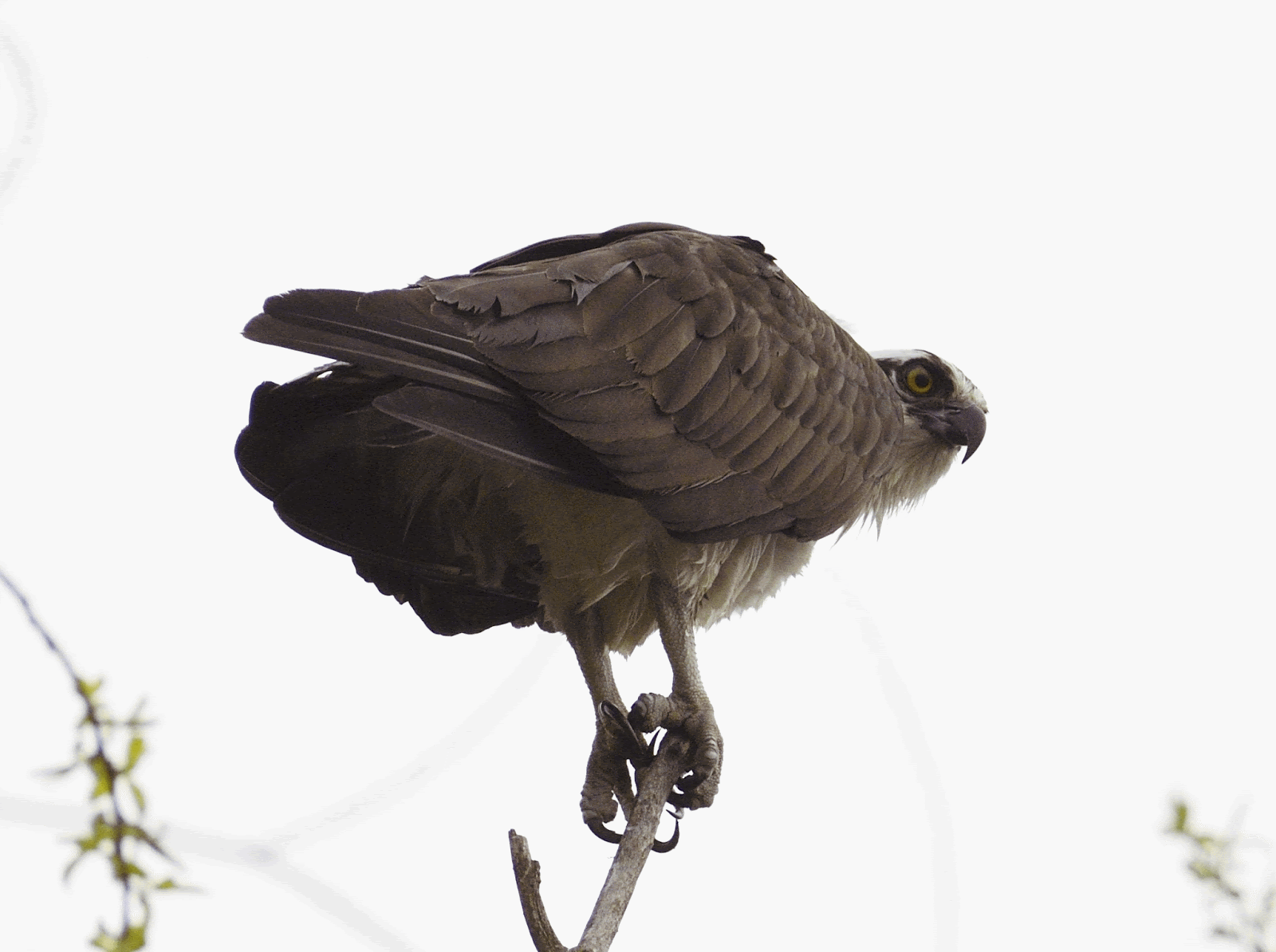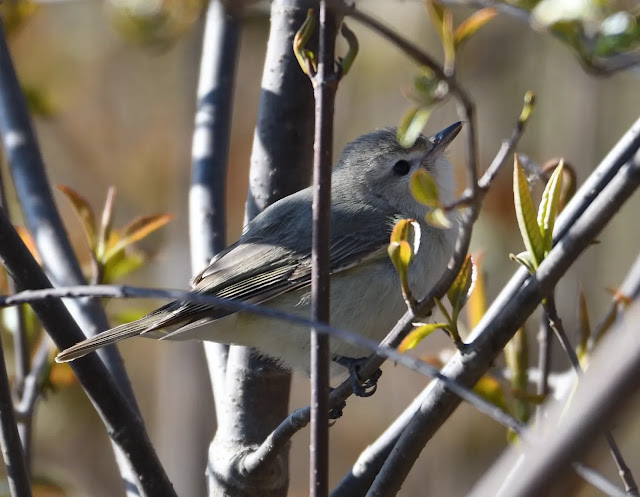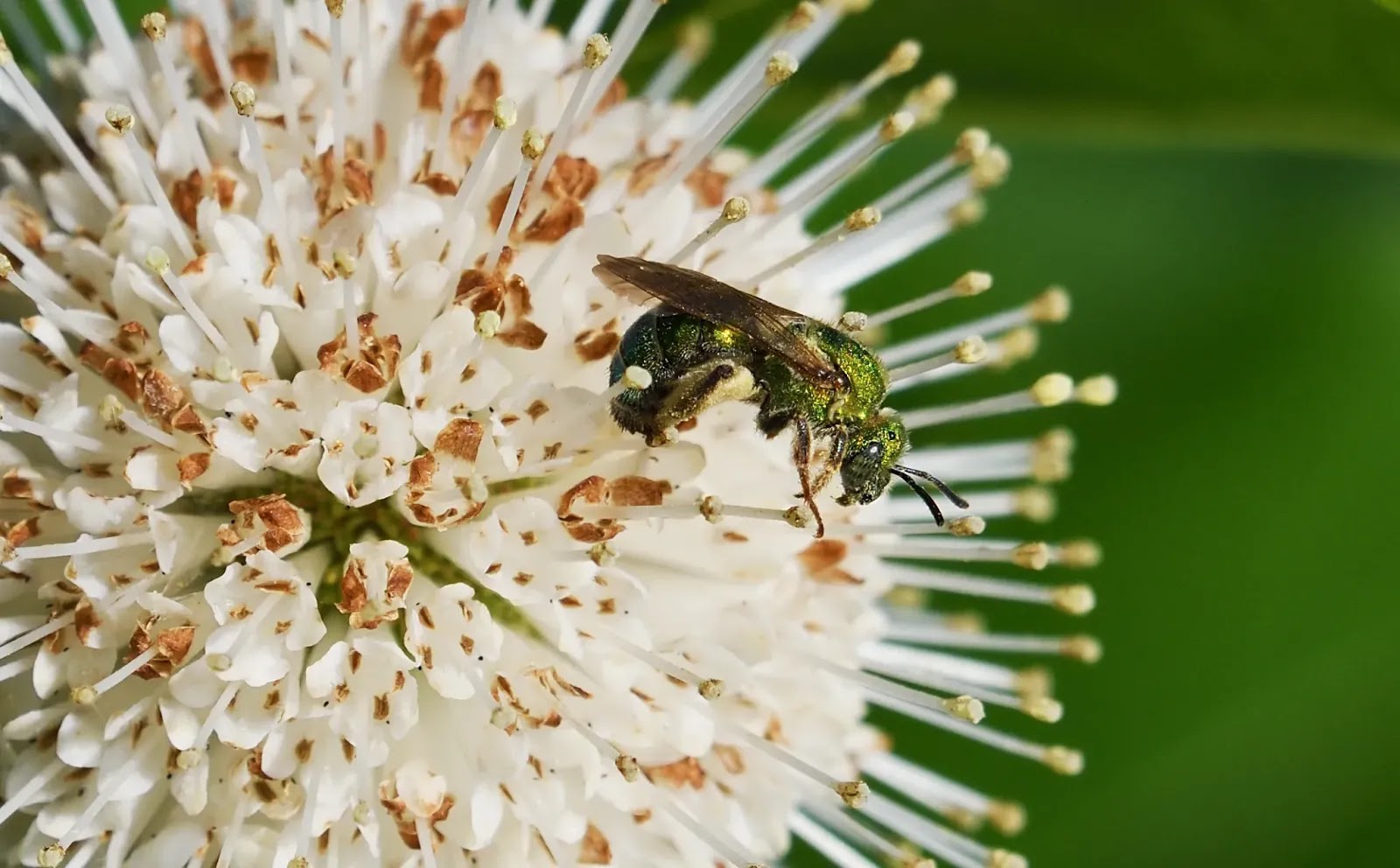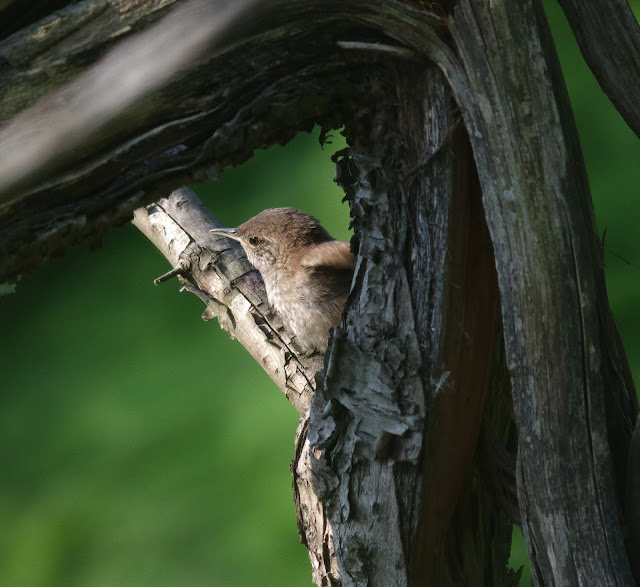Warblers and an Osprey
Tripods were set, photographers and birdwatchers alike had their favourite locations on the banks of Shoemaker Lake, ready to observe the migration of the warblers through Lakeside Park and to identify as many as possible. But sometimes what you expect is not exactly what you get. This bird made everyone forget the warblers for the few minutes that it landed in the treetops above us. Clinging to end of a single branch with its extremely sharp and curved talons, this osprey surveyed the lake for its next meal.
The osprey graced us with its company just long enough for a few photos. It took off to the far side of Shoemaker lake, and to the unwanted attention of the male red-winged blackbirds. Everyone's focus switched back to the job in hand which was in the case of the binocular wielding birdwatchers, to identify how many warblers they could see, and for the photographers, to capture good photos of birds that we do not normally see in Kitchener. A few of the warblers, like the warbling vireos, will stay for the summer months, but the majority move further north to their nesting grounds. I most certainly did not capture photos of all the warblers that passed through Lakeside Park. I observed more than I have photographs of, as photographing warblers that are small and constantly moving is tricky, to say the least.
Oftentimes, all I was left with was a grainy and partially obscured photo, like this one of a female American restart. The warblers tend to like to stay well hidden as they feed on insects in the undergrowth or in among the branches of the trees and bushes.
I did also observe the male American redstart, but all I came home with were a few photos of the female.
I'll continue in alphabetical order with some of the strikingly marked black and white warblers that I saw. A male, to the right, and below the female shows a little less contrast on her face.
The black-throated blue warblers arrived a few days after the initial wave. They are just as striking as the black and white warblers when viewed from the front, with their white underside giving sharp contrast to the details of black and blue on their face and back.
The female does not have the vibrant colours of the male but does possess the same white markings on her wing feathers.
Another black-throated warbler, a black-throated green warbler.
Its identifying features are a bright yellow face, a black throat and green on its back.
This cape may warbler has to be the tamest warbler that I came across.
It allowed me to come quite close and watch as it stoutly defended its favoured feeding area from the other warblers.
I kept seeing a chestnut-sided warbler in the same location on the far bank of Shoemaker Lake, feeding high up in the treetops. It finally came down low enough one morning for these photos.
This common yellowthroat kept returning to the same patch of reeds on the edge of Shoemaker Lake. I took a position, sitting on a fallen tree trunk and patiently waited for my photos.
Looking from below you can see the distinctive black on its chest a little better.
Another similar warbler is the northern parula.
Next is the palm warbler with its constantly wagging tail feathers.
As I mentioned earlier, some of the warbling vireos will stay with us until the return migration.
Yellow warblers stood out even in the shade with the sheer brilliance of their bright yellow feathers.
And finally, I come to my last warbler which was actually the first that I saw at Lakeside Park this year. Yellow-rumped (Myrtle) warblers have splashes of yellow on the sides of their chest, on the top of their head and as their name states, on their rump. This is the male.
And a female, showing more of a brownish colour to her feathers.
There were many more warblers that passed through Lakeside Park on their spring migration than I was able to observe, but I was able to tick off sixteen warblers. If I am lucky, then perhaps I will be able to add a few more on their return migration in the fall.
The osprey graced us with its company just long enough for a few photos. It took off to the far side of Shoemaker lake, and to the unwanted attention of the male red-winged blackbirds. Everyone's focus switched back to the job in hand which was in the case of the binocular wielding birdwatchers, to identify how many warblers they could see, and for the photographers, to capture good photos of birds that we do not normally see in Kitchener. A few of the warblers, like the warbling vireos, will stay for the summer months, but the majority move further north to their nesting grounds. I most certainly did not capture photos of all the warblers that passed through Lakeside Park. I observed more than I have photographs of, as photographing warblers that are small and constantly moving is tricky, to say the least.
Oftentimes, all I was left with was a grainy and partially obscured photo, like this one of a female American restart. The warblers tend to like to stay well hidden as they feed on insects in the undergrowth or in among the branches of the trees and bushes.
I did also observe the male American redstart, but all I came home with were a few photos of the female.
I'll continue in alphabetical order with some of the strikingly marked black and white warblers that I saw. A male, to the right, and below the female shows a little less contrast on her face.
Normally seen traversing the bark on the trunks of trees, the black and white warblers are definitely one of my favourites.
The black-throated blue warblers arrived a few days after the initial wave. They are just as striking as the black and white warblers when viewed from the front, with their white underside giving sharp contrast to the details of black and blue on their face and back.
The female does not have the vibrant colours of the male but does possess the same white markings on her wing feathers.
Another black-throated warbler, a black-throated green warbler.
Its identifying features are a bright yellow face, a black throat and green on its back.
This cape may warbler has to be the tamest warbler that I came across.
It allowed me to come quite close and watch as it stoutly defended its favoured feeding area from the other warblers.
I kept seeing a chestnut-sided warbler in the same location on the far bank of Shoemaker Lake, feeding high up in the treetops. It finally came down low enough one morning for these photos.
This common yellowthroat kept returning to the same patch of reeds on the edge of Shoemaker Lake. I took a position, sitting on a fallen tree trunk and patiently waited for my photos.
With the magnolia warblers, it didn't seem to matter where I was taking the photos, there was always something partially obscuring my view.
Whether it was a leaf or twig, it just had to be in the way.
This mourning warbler was also completely masked by blurred foreground obstructions. I had to really push the contrast to give some clarity to this photo.
Looking from below you can see the distinctive black on its chest a little better.
Nashville warblers appear quite similar to the mourning warblers.
But the white eyering of the Nashville warbler gives it away.
Another similar warbler is the northern parula.
It has more of a bluish tinge to its feathers though, with just a splash of green on its back and the white eyering is broken.
Next is the palm warbler with its constantly wagging tail feathers.
I had at first glance identified this bird as a warbling vireo. The colour of its back wasn't obviously apparent until I processed the images and lightened the areas covered in shadow.
The olive green on its back is not present on warbling vireos. This is a male Tennessee Warbler.
The following photo is of a warbling vireo.
As I mentioned earlier, some of the warbling vireos will stay with us until the return migration.
Another vireo and not the best of photos, looking way up into the canopy of the trees, a red-eyed vireo.
The red-eyed vireos also stay with us for the summer months, and I simply had to return to this post when I obtained a better photo. From this photo, you can clearly see why they are called red-eyed vireos.
Yellow warblers stood out even in the shade with the sheer brilliance of their bright yellow feathers.
And finally, I come to my last warbler which was actually the first that I saw at Lakeside Park this year. Yellow-rumped (Myrtle) warblers have splashes of yellow on the sides of their chest, on the top of their head and as their name states, on their rump. This is the male.
And a female, showing more of a brownish colour to her feathers.
There were many more warblers that passed through Lakeside Park on their spring migration than I was able to observe, but I was able to tick off sixteen warblers. If I am lucky, then perhaps I will be able to add a few more on their return migration in the fall.
Copyright © wildlakeside.blogspot.com 2020 Scott Atkinson All Rights Reserved.











































Comments
Post a Comment